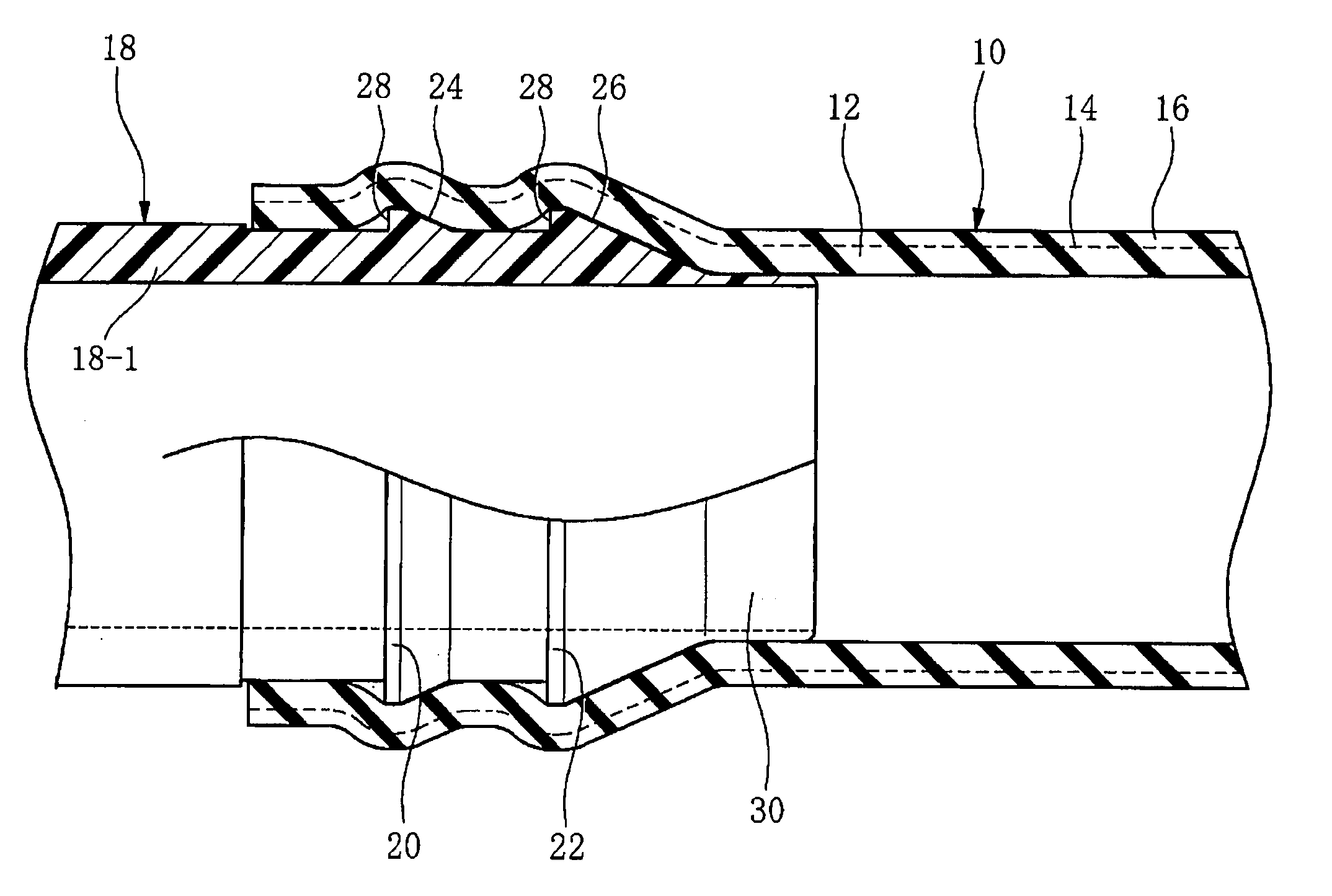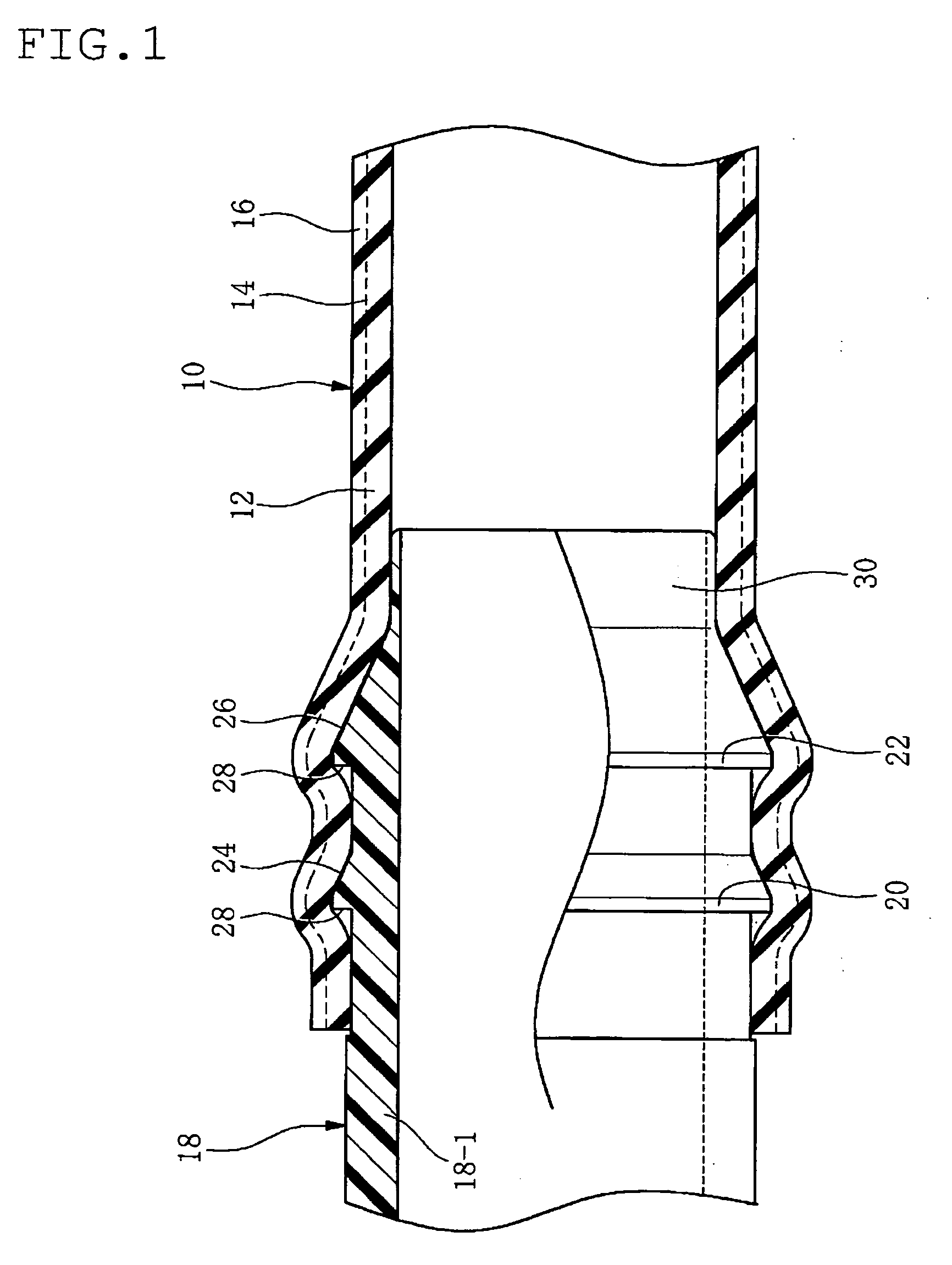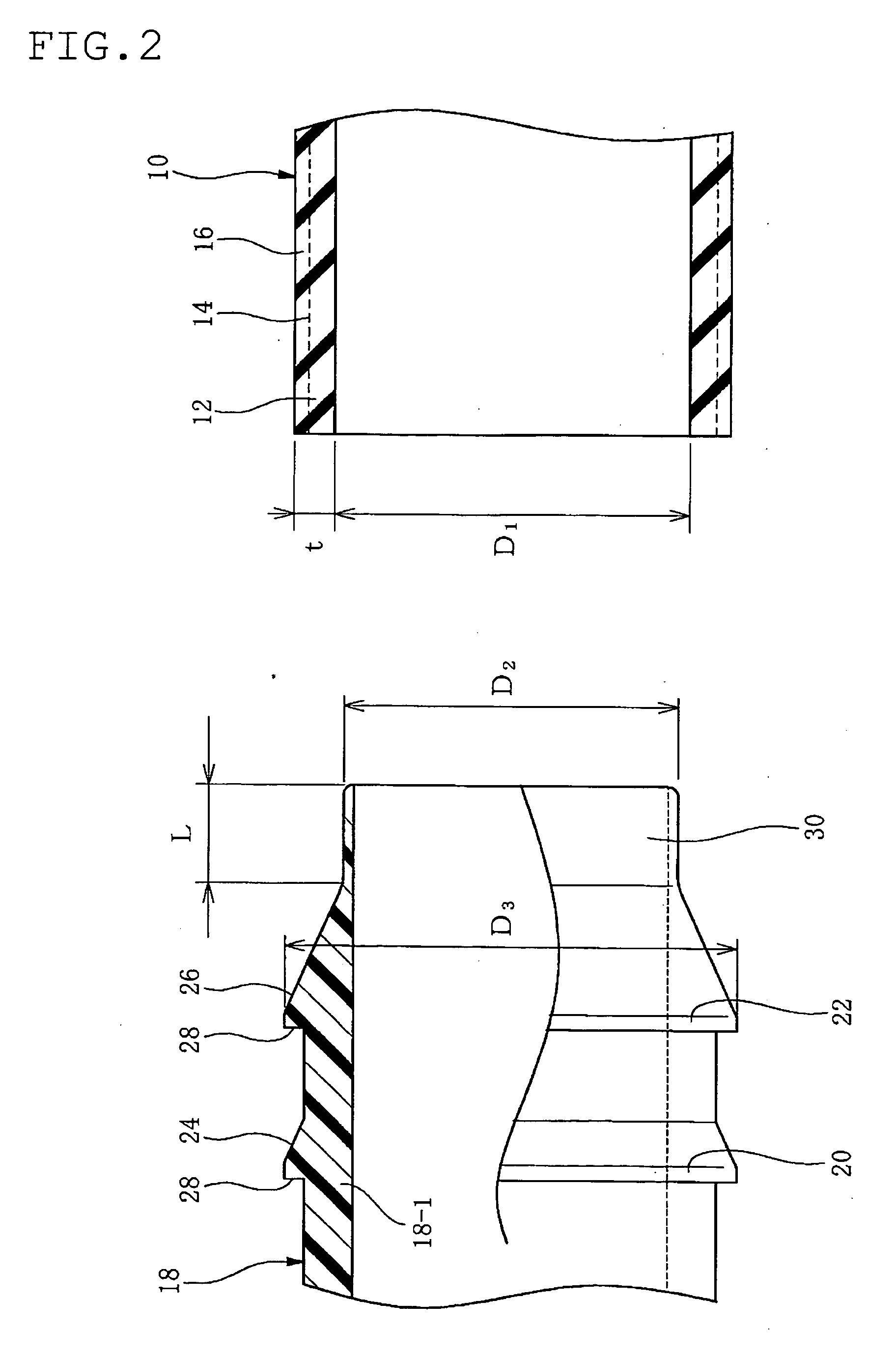Connecting pipe
- Summary
- Abstract
- Description
- Claims
- Application Information
AI Technical Summary
Benefits of technology
Problems solved by technology
Method used
Image
Examples
Embodiment Construction
[0059] In FIG. 1, reference numeral 10 is a rubber hose (here, a radiator hose) having a multilayered construction including an inner surface rubber layer 12, a fiber reinforcing layer 14 and an outer surface rubber layer 16.
[0060] Reference numerals 18, 18-1 indicate a rigid connecting pipe, a rigid pipe body (here, made of resin, but may be made of metal). The connecting pipe 18 serves as a joint member for a piping. The connecting pipe 18 is provided with a plurality of annular ribs (here, two annular ribs) 20, 22 along an axial direction of the connecting pipe 18 or the pipe body 18-1. Each of the annular ribs 20, 22 has a generally saw-edged cross-section and is formed in an acute angled shape.
[0061] The annular ribs 20, 22 are portions to serve as stoppers relative to the rubber hose 10 by biting in an inner surface of the rubber hose 10 after the connecting pipe 18 is press-fitted in the rubber hose 10.
[0062] In this embodiment, one annular rib 22 is provided on a leading ...
PUM
| Property | Measurement | Unit |
|---|---|---|
| Length | aaaaa | aaaaa |
| Diameter | aaaaa | aaaaa |
| Length | aaaaa | aaaaa |
Abstract
Description
Claims
Application Information
 Login to View More
Login to View More - R&D
- Intellectual Property
- Life Sciences
- Materials
- Tech Scout
- Unparalleled Data Quality
- Higher Quality Content
- 60% Fewer Hallucinations
Browse by: Latest US Patents, China's latest patents, Technical Efficacy Thesaurus, Application Domain, Technology Topic, Popular Technical Reports.
© 2025 PatSnap. All rights reserved.Legal|Privacy policy|Modern Slavery Act Transparency Statement|Sitemap|About US| Contact US: help@patsnap.com



